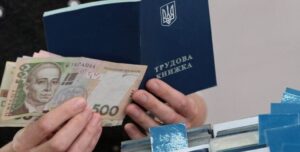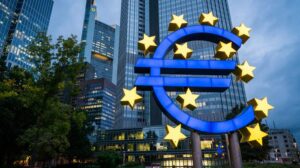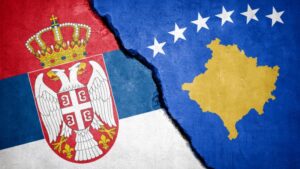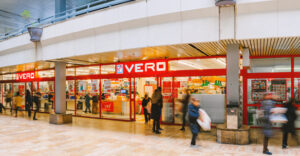
Unemployment in Spain fell in the second quarter to its lowest level since 2008. According to the Spanish statistics agency INE, unemployment in the country fell to 10.29% in April-June, compared with 11.36% in the previous quarter. Analysts polled by Trading Economics had expected a more moderate decline to 10.7%.
The number of unemployed fell by 236,100 to 2.55 million. At the same time, the number of employed increased by 505,500 to 20.27 million.
Source: http://relocation.com.ua/riven-bezrobittia-v-ispanii-znyzyvsia-do-minimumu-z-2008-roku/

The German government plans to introduce stricter rules for receiving social assistance for the unemployed, including refugees from Ukraine, German Chancellor Friedrich Merz said in an interview with ARD television on Sunday. In an interview with ARD on Sunday, July 13, Merz confirmed that citizens in need of support will continue to receive it. However, the German government intends to introduce stricter rules for applicants.
“People who can work must work,” Merz emphasized. In addition, housing cost requirements may be tightened, for example, by introducing rent caps or checks on living space.
According to the German chancellor, there is significant potential for savings when, as part of the reform, basic income will be paid to citizens instead of benefits from 2026. “More than one or two billion can be saved,” Merz said, adding that the “change in the system” must take place “step by step.”
According to Merz, the aim of basic income should be “to ensure that those who really need state assistance continue to receive it in the future.” “I would even be prepared to increase the rates, for example in the event of sudden unemployment, so that those affected can quickly find new jobs,” he said.
In 2024, around 826,000 working citizens in Germany were unable to live on their wages. The state paid them “Bürgergeld” (citizen’s income) amounting to EUR 7 billion. Among the recipients of “Bürgergeld” in Germany are Ukrainian refugees from the Russian war.
According to DW, as of 2024, there were 1.25 million Ukrainians living in Germany, 296,000 of whom were employed. Another 211,000 Ukrainians in the country were unemployed, and 98,000 were attending integration courses.

Preferential roaming between Ukraine and the EU will remain available until the end of 2025, according to the National Commission for the State Regulation of Electronic Communications, Radio Frequency Spectrum, and Postal Services (NCC).
According to a statement on its Facebook page on Wednesday, the NCCIR and the European Commission confirm the extension of the Joint Statement between Ukrainian and European operators on ensuring roaming for Ukrainians in the European Union for the next six months, until December 31, 2025.
It is noted that this is the sixth extension of the agreements, which have been in force since April 2022.
“Staying connected is a basic need that becomes critical in times of war. Since the first days of the full-scale invasion, the NCCIR has been working to ensure that Ukrainians remain connected, including abroad,” said NCCIR Chair Lilia Malyon.
“The joint statement has become an exceptional and effective tool. I am grateful to Ukrainian and European operators who continue to provide favorable conditions for Ukrainians, as well as to colleagues from the EC and BEREC for their support and joint work. Our team continues to move confidently towards a Single Digital Market for roaming in the EU,” Malion added.
In addition, the joint statement also provides favorable communication conditions for EU citizens in Ukraine.
The press service also reminded that the NCC team, together with colleagues, is completing work on Ukraine’s accession to the EU’s single roaming area “Roaming Like at Home” (RLAH), which is expected as early as January 1, 2026.

The European Central Bank (ECB) considers the current level of key interest rates to be justified and remains committed to the goal of maintaining inflation in the euro area at 2% in the long term, ECB President Christine Lagarde said.
“Our aspiration, commitment and duty is to ensure price stability, and this corresponds to inflation in the region of 2%,” she said in an interview with the German newspaper ARD. “We have succeeded, inflation is already at 2%, and we will continue to work in this direction.
“We will do everything necessary to ensure that inflation remains at this level,” Lagarde added. “Uncertainty is high, we are surrounded by unpredictability, but there is confidence and stability in terms of prices.
Meanwhile, François Villeroy de Galo, Governor of the Bank of France and member of the ECB Governing Council, warned that the 14% strengthening of the euro since the beginning of the year poses a risk of too low inflation.
In his opinion, a 10% rise in the euro reduces inflation by 0.2 percentage points over the next three years.
“This may increase the risks that inflation will be below our target, and we cannot ignore this,” de Galo said.
Earlier, ECB Vice President Luis de Guindos noted that the rise of the euro/dollar pair above $1.2 could complicate the central bank’s task of achieving the target inflation rate.
The ECB has cut rates eight times over the past year, and now the key deposit rate is 2%. Analysts and market participants generally expect that the regulator will not change rates at the July meeting in order to assess the impact of the measures already taken on the eurozone economy.

According to Serbian Economist, trade between Central Serbia and Kosovo is growing rapidly, with Serbian goods actively returning to the region’s markets. According to the Kosovo Business Alliance, imports from Central Serbia in the first six months of 2025 reached €110.53 million, compared to €50.64 million in the same period of 2024 — an increase of 118%.
An analysis of the sector shows that consumer goods and food products, including non-alcoholic beverages, foodstuffs, as well as construction materials, agricultural machinery, and mineral fertilizers, have risen in price and expanded their market presence. These categories traditionally form the basis of trade between Serbian suppliers and Kosovar consumers.
According to experts, the return of Serbian goods became possible after the easing of import barriers, including the lifting of the total ban and the introduction of post-border controls at the Merdare checkpoint.
Experts note that the restoration of access to convenient logistics and price attractiveness strengthens Central Serbia’s position in the Kosovo market.
The Kosovo Business Alliance, an association of companies trading in the region, analytically monitors trade flows and violations. Since 2023, Kosovo has gradually eased import restrictions on Serbian goods, including through the Merda checkpoint, which has led to a revival of trade.
Imports of Serbian goods are rapidly recovering in the Kosovo and Metohija market, sending not only an economic but also a political signal — a thaw in trade relations.
Source: https://t.me/relocationrs/1156

Greek retail chain Veropoulos, known in Serbia under the Super Vero brand, has announced that it will continue its expansion in the country with the launch of new locations starting in 2026. The company plans to strengthen its presence after more than 20 years of successful operations.
The company has been present in Serbia since 2001, with the first Super Vero store opening in 2002 in New Belgrade. As of 2017, total investment amounted to €48 million, with 500 employees and 15,000 m² of retail space.
In 2013, Veropoulos invested an additional €20 million in projects to build new stores: at that time, three supermarkets were in operation, a fourth was under construction, and a fifth was being prepared for launch. The total number of employees grew to 650.
Growth plans: 2026 and beyond
• Several new stores are expected to open in 2026, including the Jumbo format. The company is preparing sites in various districts of Belgrade and other cities.
• Super Vero specializes in Georgian and Greek products, household goods, and premium delicacies. Its product range includes fresh vegetables and fruits, seafood, olives, cheese, meat, groceries, and household goods.
Analytical information about Veropoulos
• Country of origin: Greece, parent company — Vero S.A., a family business since the 1970s.
• Investments in Serbia: €68-70 million over more than 20 years of operation.
• Staff: approximately 650 people (as of 2025).
• Store formats: Super Vero (supermarkets), Jumbo (hypermarkets with restaurants); floor space from 2,000 m².
• Product range: focus on high-quality products, a wide range of Greek, natural, and organic products. Fresh baked goods, seafood, and premium products are available.
• Brand strategy: positioned as a family brand that does not seek aggressive expansion but is committed to sustainable growth and development.
Source: https://t.me/relocationrs/1147